This image is from Cassini spacecraft’s final observation of Saturn’s icy moon Rhea (949 miles or 1,527 kilometers across) on May 2, 2017. The spacecraft was at the time high above the plane of Saturn’s rings, looking down at Rhea’s northern hemisphere. The northern rim of the giant Tirawa impact basin can be seen along the limb at left. (For a high-resolution view of Rhea, see PIA07763; Tirawa is the large basin at the one o’clock position in that view.)
The image was taken in visible light with the Cassini spacecraft narrow-angle camera at a distance of approximately 230,000 miles (370,000 kilometers) from Rhea. Image scale is 1.2 miles (2 kilometers) per pixel.
The Cassini spacecraft ended its mission on September 15, 2017.
The Cassini mission is a cooperative project of NASA, ESA (the European Space Agency) and the Italian Space Agency. The Jet Propulsion Laboratory, a division of the California Institute of Technology in Pasadena, manages the mission for NASA’s Science Mission Directorate, Washington. The Cassini orbiter and its two onboard cameras were designed, developed and assembled at JPL. The imaging operations center is based at the Space Science Institute in Boulder, Colorado.

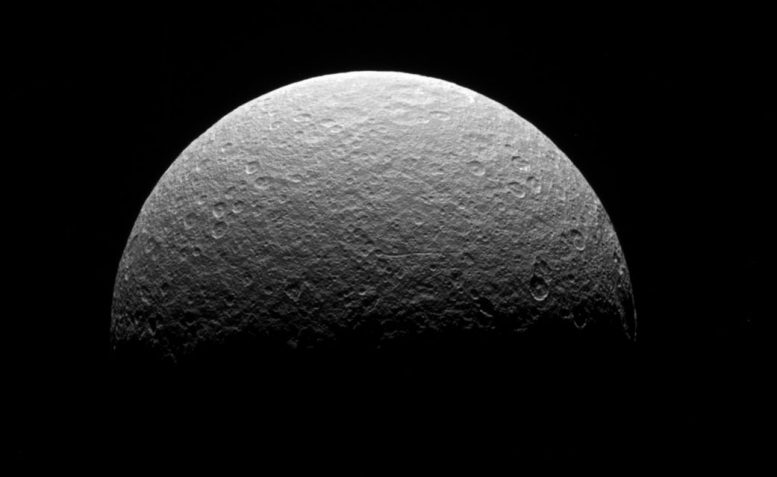
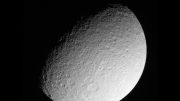

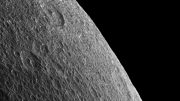
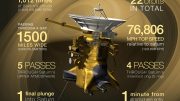



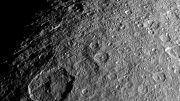
Be the first to comment on "Cassini’s Final Observation of Saturn’s Icy Moon Rhea"